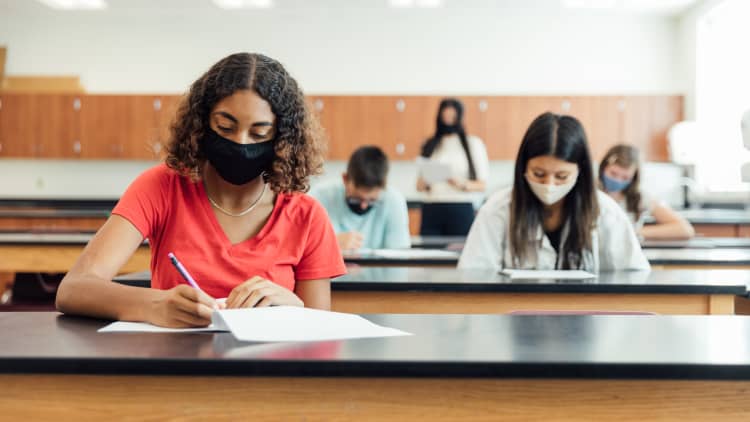The United States is now entering its eighth month of combating Covid-19 — and the country's colleges continue to be impacted.
Schools have been forced to close their campuses, move classes online and take on the responsibility of testing, quarantining and protecting students. College enrollments have also shrunk.
"Many colleges aren't releasing their numbers publicly, and we won't see the IPEDS data from this year for two years," says higher education expert Mark Kantrowitz, referencing the Integrated Postsecondary Education Data System which is collected by the Department of Education. However, "There have been significant decreases in college enrollment."
Most recent data from the National Student Clearing House, which analyzes data from 3.6 million students from 629 colleges, indicates that undergraduate college enrollment is down 2.5%.
While many predicted that students might opt to ride out the pandemic by taking community college courses to save money and stay closer to home, community colleges actually saw the largest dip in enrollment. Community college enrollment decreased by 7.5%, while public four-year schools saw relatively little change.
Some public four-year universities have even seen an increase in the size of their student body.
For instance, this semester Purdue University reported the largest student body in the school's history — 46,114 students, including 35,122 undergraduates and 8,925 incoming students.
Purdue's vice provost for enrollment, Kristina Wong Davis, says the increase is part of a multiple-year trend.
"We've had larger classes in every recent year, not just this one," she says. "For eight straight years, we've had no increase in tuition and fees. That, coupled with a reputation for quality, especially in science and engineering, has generated a lot of interest from our own state and across the country."
In contrast, the City University of New York public university system, which includes seven community colleges, has seen a dip in enrollment.
"Our enrollment tally is not final yet, as several of our colleges are on different academic calendars, offer rolling admissions or delayed their commitment dates in response to the COVID-19 pandemic," says Frank Sobrino, CUNY's director of media relations over email. "That said, through late August, we had seen a 4.4% decline compared to last year."
The National Student Clearing House data indicates that college enrollment has decreased by 11.2% among international students, 7.7% among Native American students, and 6.3% among both Black and White students.
Kantrowitz predicts that the dip in enrollment will likely "be a short-term disruption, allowing a return to a close to normal situation in a year or two" and adds that the decrease in international students was to be expected.
"First-year [international] students are unable to arrive in the U.S. because U.S. embassies and consulates are not conducting visa interviews and our borders are still mostly closed," he explains.
And while the 2.5% decrease in college enrollment is significant, Koc says it is much less dramatic than he anticipated.
"Early this summer there were fears that enrollments would be down by 15% because of Covid, because of all the online instruction and because many thought that students would be taking gap years," he says. "It's great to take a gap year but usually what you do is you work during a gap year.
"But in this situation, that wasn't an alternative."
Don't miss:



